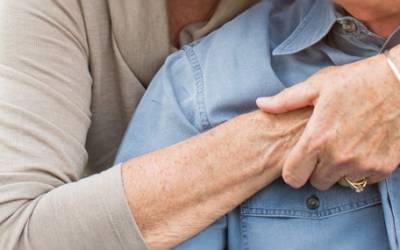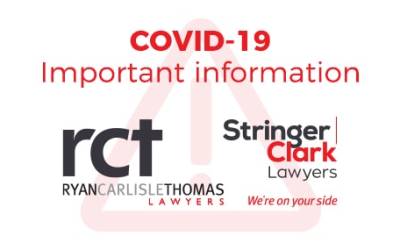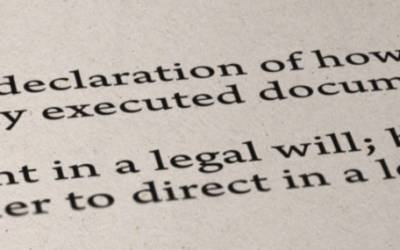Call 1800 641 743 for a free first interview. Ask about our No Win No Fee OR Expenses* fee policy.
Published: 05 June 2019
Author:
Kate Malone
Will a recent judgement open up a new avenue for suing the church for sex abuse?
Case: JCB V Bishop Paul Bird for the Diocese of Ballarat & Anor
A Supreme Court judgment handed down last week (JCB V Bishop Paul Bird for the Diocese of Ballarat & Anor) could open another avenue for survivors to sue church authorities and other institutions for sex abuse, which hinges on the interpretation of owner/occupier liability laws.
The case may signal a potentially interesting shift in the law and could, in certain circumstances, allow survivors to pinpoint liability for the abuse on Defendant/s in a different way, rather than relying on the principles of negligence, vicarious liability and/or direct liability.
In this blog, I look in detail at the case, which assumes new relevance this week given the appeal of Cardinal Pell’s conviction.
Catholic Church back in the dock
The Catholic Church is set to be the centre of attention this week in the appeal of the conviction of Cardinal Pell set to run today and tomorrow.
However, that’s not the only reason why the Catholic Church is once again in the firing line.
Last Wednesday, 29 May 2019, the Supreme Court handed down a pre-trial judgment in the matter of JCB v Bishop Paul Bird for the Diocese of Ballarat & Anor [2019] VSC 348, which has again cast doubt over the Church’s approach to legal matters in claims involving sexual abuse by members of the clergy.
The survivor in this matter alleges that in April 1982, at the age of 9, he was raped by the notorious paedophile priest, Gerald Ridsdale, in Mortlake.
The full trial in this matter is not due to commence until August 2019. However, at the pre-trial hearing, the survivor sought leave to file an amended Statement of Claim and also join two further Defendants to the proceedings, that being the Catholic Diocese of Ballarat and Roman Catholic Trust Corporation for the Diocese of Ballarat.
The Court’s judgement provides a detailed analysis of the merits of this proposal. Some important points to take away from this judgment are discussed below.
Is the Church back-tracking on its knowledge of Ridsdale’s offending?
The survivor sought to amend the Statement of Claim to include details about the Church’s knowledge of Risdale’s offending.
The Statement of Claim states that by the time that Ridsdale was appointed to Mortlake in 1978, the Church was and/or became aware of Ridsdale’s tendency to engage in sexual conduct with minors. It also specifically details that in about 1963, Bishop O’Collins was informed of an allegation that Ridsdale had engaged in sexual behaviour with a minor whilst he was a priest in Ballarat North.
The survivor sought to amend the Statement of Claim to include further evidence of Ridsdale’s offending, including allegations that he sexually abused children in Warrnambool in about 1972, in Ballarat East also in about 1972, in Apollo Bay in about 1974, in Edenhope in about 1977 and during his time at the National Pastoral Institute in about 1980.
The Church’s Defence acknowledged that in or around late 1975, they were informed of a complaint against Ridsdale in Inglewood, but otherwise appears to have denied that they had any other express knowledge of Ridsdale’s offending prior to his placement at Mortlake.
The survivor’s legal representatives referred the Court to submissions made by the Church itself, via its Truth Justice and Healing Council (‘TJHC’), to the Royal Commission into Institutional Responses to Child Sexual Abuse (‘the Royal Commission’) which contradicts the approach taken by the Church in this case.
The survivor’s legal team referred to evidence provided in the TJHC submissions which expressly referred to the fact that between 1962 – 1964, Bishop O’Collins informed Ridsdale that a complaint had been made against him.
According to Ridsdale’s own evidence, Bishop O’Collins warned Ridsdale that he would not be able to serve as a priest if such a thing happened again and also referred him to see a psychiatrist, Dr Eric Seal. His opinion was that with appropriate treatment Ridsdale was capable of serving as a priest into the future. Ridsdale’s evidence was also that Bishop O’Collins subsequently moved him to Mildura in 1964, Swan Hill in 1966 and Warrnambool in 1970 where he sexually abused more children in each place.
The survivor’s legal representatives also referred to several sections of the TJHC submissions to the Royal Commission which acknowledged that Bishop Ronald Mulkearns received numerous complaints about Ridsdale in 1981 – 1982 whilst he was in Mortlake.
Back-tracking
What is clear from the Church and their legal representative’s actions is that they are attempting to back-track from their own admissions during the Royal Commission regarding their knowledge of Ridsdale’s offending. It is completely contradictory for the Church to on the one hand provide public evidence regarding their knowledge of Ridsdale’s offending to the Royal Commission, but on the other hand to make denials and fail to admit the same is true in an individual case against the Church regarding offending by Ridsdale.
Such an approach by the Church seems not only contradictory but also unnecessarily adversarial towards the survivor who ought to be able to rely on this public information, provided by the TJHC itself, for the purpose of pursuing their claim.
Unfortunately, this is all too familiar as the Church has shown in the past that they will not shy away from overly legalistic, adversarial approaches to litigation, including their reliance up until recent times on the Ellis Defence, which effectively meant that the Church was unable to be sued.
While the Court, in this case, was not required to provide any definitive conclusion regarding the inconsistencies between the TJHC submissions and the Church’s position in this case, it did comment that there appears to be substance to the survivor’s contention that the submissions by the TJHC go well beyond the limited admissions the Defendants have made in this particular case.
Is the Church’s knowledge of other paedophile priests offending relevant?
Part of the proposed amendments to the survivor’s Statement of Claim was to include pleadings regarding the Church’s knowledge of other paedophile priests' behaviour around the same time that Ridsdale is alleged to have perpetrated crimes on the survivor.
Pleasingly, the Court agreed that the survivor should be allowed to refer to the Church’s knowledge of other paedophile priests in their pleadings. The Court held that such information may be relevant in considering what duty the Church had to take steps to prevent Ridsdale’s offending and may also be relevant to the survivor’s claim for aggravated and/or exemplary damages. Aggravated and/or exemplary damages essentially aim to punish the Defendant/s for their actions rather than aiming to restore the survivor to their pre-injury position, which is the purpose of ordinary damages.
The Court’s approach in this respect is helpful for survivors’ bringing claims against the Church as it sets a precedent by preventing the Church from looking at their knowledge of an individual priest’s offending in isolation. It instead demands a broader review of the whole picture, which, taken collectively, shows that the Church had knowledge of widespread and systemic offending by multiple priests and ought to have taken steps across the board to minimise the risk of priests abusing children.
Owner/Occupier Liability
Interestingly, the proposed amended Statement of Claim of the survivor contends that the proposed fourth Defendant (the Roman Catholic Trust Corporation for the Ballarat Diocese) was responsible for the abuse of Ridsdale in this case at law because they were the owner/occupier of the premises where the abuse took place.
The proposed amended Statement of Claim essentially argues that the fourth Defendant owed a duty to the survivor to ensure that he was not injured/damaged by reason of the “state of the premises”.
The Court remarked that this was a novel approach to a claim regarding owner/occupier liability, which is usually reserved for situations whereby a person sustains injury as a result of the physical condition of the premises (eg: where there is uneven concrete on the premises which causes a person to trip and fall).
The survivor’s legal team have argued that the phrase “state of the premises” does not just mean the physical condition of the premises, but also extends to the presence of Ridsdale on the premises at any given point in time. The Defendants disagreed that the term “state of the premises” could be interpreted in such a way and submitted that the claim has no reasonable prospects of success.
While the Court acknowledged that there was no authority directly on this point, they disagreed with the Defendants that there were no reasonable prospects of success in making such an argument. Further, the Court likened Ridsdale’s presence on the premises as potentially being similar to that of the presence of a dangerous guard dog left on the premises by an owner/occupier.
Again, the Court was not required to make any definitive conclusions regarding the likely success of such an argument. Such an issue would need to be further considered and decided in a full trial.
Owner/occupier liability might open doors to future claims
If the survivor is ultimately successful in making the argument that the Roman Catholic Trust Corporation for the Diocese of Ballarat is responsible for the abuse of Ridsdale in its capacity as an owner/occupier, this would indeed be a novel interpretation of the law surrounding owner/occupier liability and significantly broadens its existing interpretation.
This could, in turn, also open the door for survivors in other matters to make similar claims to the effect that a Defendant/s is responsible for the abuse that they suffered because they were the owner/occupier of the premises where the abuse took place.
The ability to plead such an argument would likely depend on the Defendant/s involved and also the level of knowledge that the Defendant/s had about the offending of the particular perpetrator at the time that he was permitted to be on the premises.
Despite these difficulties, the potential change in the interpretation of owner/occupier’s liability signals a potentially interesting shift in the law and could, in certain circumstances, allow survivors to pinpoint liability for the abuse on the Defendant/s in a different way, rather than relying on the principles of negligence, vicarious liability and/or direct liability.
If you would like advice about pursuing an institutional abuse claim, please contact a member of the Ryan Carlisle Thomas/Stringer Clark Institutional Abuse team on (03) 9238 7878.
Categories Sexual Abuse, Institutional Abuse, Catholic Church
Call 1800 641 743 to be connected to your nearest office, find an office near you on our office locations map, or email us using the form below and we will contact you on the same or next business day.
* Required Field



